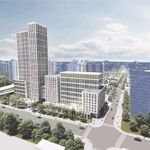wilson_wu
Active Member
In the face of flatlining ridership, I was thinking of ways the TTC could boost its ridership.
Ive always felt their Rocket bus network was a little neglected. The Rocket buses are simply assigned a route number like regular buses and don't look any different than conventional services. But I've always felt these buses were higher order transit and should be treated as such.
For instance, in the face of potentially losing ridership to the new Union-Pearson Express, the TTC rebranded the 192 Rocket buses with a special wrap to advertise its frequent, rapid and reliable service. In addition to this, the route was added to the Subway/RT map.
Could such changes be applicable to the rest of the Rocket network? Would it draw ridership in the same way Zum has successfully been doing for Brampton Transit (while the rest of the GTA is seeing falling/flatlining ridership)?
-Assign letters for Rocket Routes to distinguish itself from conventional buses
-Include routes on Subway/RT/Express Bus map, however the lines are thinner to distinguish from rapid transit lines
-Wrap buses to match the appearance of Toronto Rocket subway trains and market these as "Toronto's Surface Rockets"
-Include Wifi on board - The technology is available as it is in use on York Region Transit's 320
-Speed up service by converting the Rocket buses to all door boarding and proof of payment.
-Consider the use of European double-articulated buses for high ridership Rocket routes.
-What would differentiate a regular express bus to a Rocket route would be its frequency and scope of hours of service.
(Click the map to enlarge)



Ive always felt their Rocket bus network was a little neglected. The Rocket buses are simply assigned a route number like regular buses and don't look any different than conventional services. But I've always felt these buses were higher order transit and should be treated as such.
For instance, in the face of potentially losing ridership to the new Union-Pearson Express, the TTC rebranded the 192 Rocket buses with a special wrap to advertise its frequent, rapid and reliable service. In addition to this, the route was added to the Subway/RT map.
Could such changes be applicable to the rest of the Rocket network? Would it draw ridership in the same way Zum has successfully been doing for Brampton Transit (while the rest of the GTA is seeing falling/flatlining ridership)?
-Assign letters for Rocket Routes to distinguish itself from conventional buses
-Include routes on Subway/RT/Express Bus map, however the lines are thinner to distinguish from rapid transit lines
-Wrap buses to match the appearance of Toronto Rocket subway trains and market these as "Toronto's Surface Rockets"
-Include Wifi on board - The technology is available as it is in use on York Region Transit's 320
-Speed up service by converting the Rocket buses to all door boarding and proof of payment.
-Consider the use of European double-articulated buses for high ridership Rocket routes.
-What would differentiate a regular express bus to a Rocket route would be its frequency and scope of hours of service.
(Click the map to enlarge)



Last edited:




